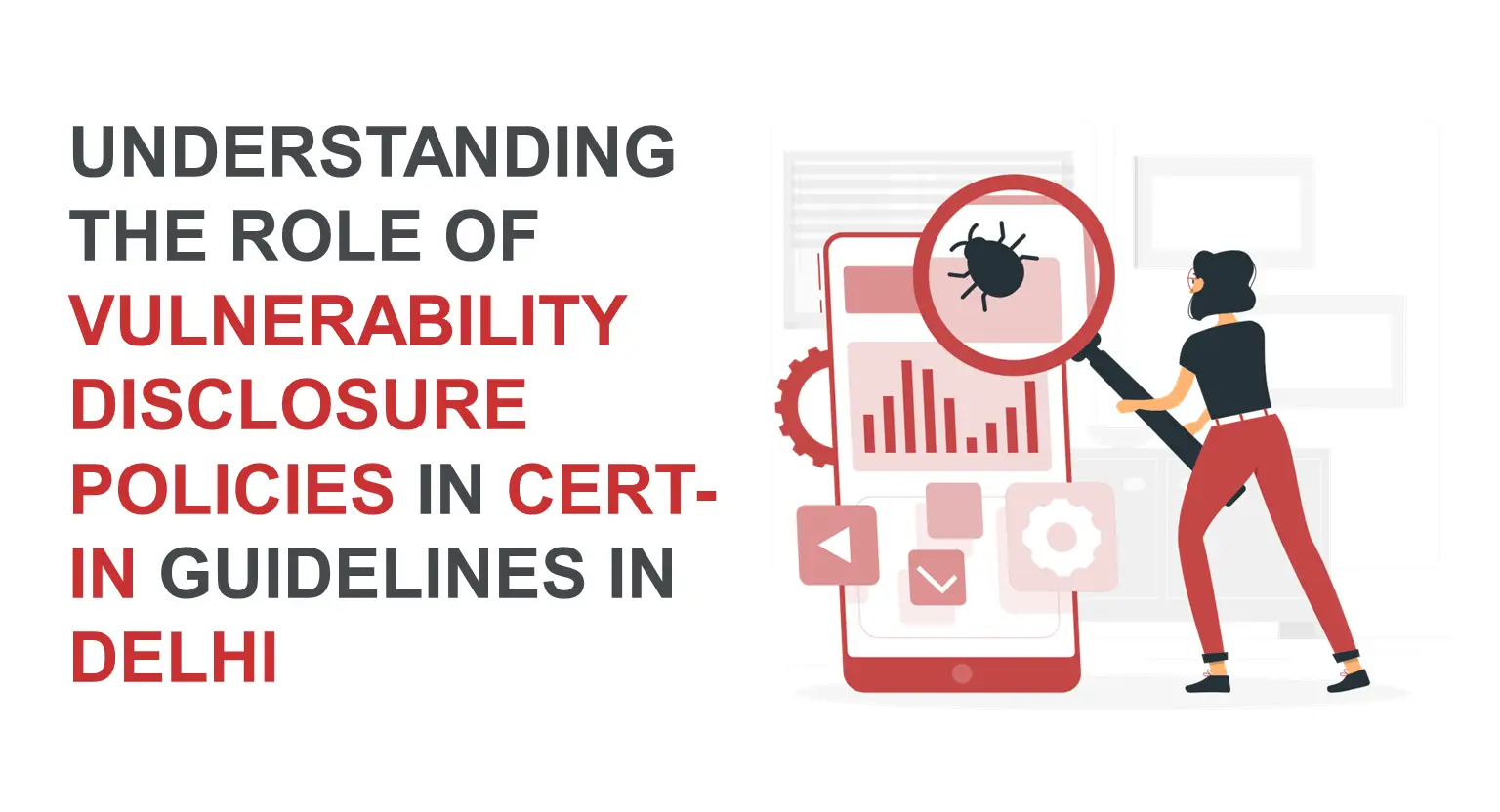Understanding the role of vulnerability disclosure policies in CERT-In guidelines in Delhi

1 Minutes 49 Seconds | 1151 views
Listen This Blog Now!
Introduction
Cybersecurity is a significant concern in today's digital world. In India, the Computer Emergency Response Team (CERT-In) plays a vital role in ensuring the country's cybersecurity. One of the essential aspects of CERT-In guidelines is vulnerability disclosure policies (VDPs). VDPs are critical for organizations to maintain the security of their digital assets and infrastructure. In this blog, we will discuss the role of vulnerability disclosure policies in CERT-In guidelines and how they help organizations protect against cyber threats in Delhi.
What are vulnerability disclosure policies (VDPs)?
Vulnerability disclosure policies (VDPs) are a set of guidelines that outline how an organization should handle reports of potential security vulnerabilities. VDPs encourage security researchers to report vulnerabilities to the organization responsible for the vulnerable system, application, or device. VDPs aim to promote collaboration between security researchers and organizations and ensure that security vulnerabilities are addressed quickly and efficiently.
The role of vulnerability disclosure policies in CERT-In guidelines:
CERT-In guidelines include recommendations for organizations to implement VDPs. VDPs help organizations to:
-
Receive timely reports of vulnerabilities: With a VDP in place, organizations can receive timely reports of vulnerabilities from security researchers. This allows the organization to address vulnerabilities before they are exploited by attackers.
-
Address vulnerabilities effectively: VDPs provide a process for handling vulnerabilities, allowing organizations to address them effectively. The VDP should define how vulnerabilities should be reported, how they will be validated, and how they will be addressed.
-
Build a culture of security: By implementing a VDP, organizations can demonstrate their commitment to cybersecurity. This helps to build a culture of security within the organization, which is essential for maintaining a robust security posture.
-
Protect against legal repercussions: VDPs can help organizations protect against legal repercussions by providing a framework for handling vulnerabilities. Organizations that do not have a VDP in place may be exposed to legal liability if a vulnerability is exploited by attackers.
Conclusion
Vulnerability disclosure policies (VDPs) are a critical component of CERT-In guidelines for cybersecurity in India. By implementing a VDP, organizations can receive timely reports of vulnerabilities, address vulnerabilities effectively, build a culture of security, and protect against legal repercussions. As cyber threats continue to evolve, it is essential for organizations to stay ahead of the curve and implement VDPs to protect their digital assets and infrastructure. Want to enhance your organization's cybersecurity posture in Delhi? Let CyberNX help. Contact us today to schedule a consultation and discover how our advanced cybersecurity solutions can help protect your business from cyber threats.
Table Of Content
- Introduction
- What are vulnerability disclosure policies (VDPs)?
- The role of vulnerability disclosure policies in CERT-In guidelines
- Receive timely reports of vulnerabilities
- Address vulnerabilities effectively
- Build a culture of security
- Protect against legal repercussions
- Conclusion
Introduction
Cybersecurity is a significant concern in today's digital world. In India, the Computer Emergency Response Team (CERT-In) plays a vital role in ensuring the country's cybersecurity. One of the essential aspects of CERT-In guidelines is vulnerability disclosure policies (VDPs). VDPs are critical for organizations to maintain the security of their digital assets and infrastructure. In this blog, we will discuss the role of vulnerability disclosure policies in CERT-In guidelines and how they help organizations protect against cyber threats in Delhi.
What are vulnerability disclosure policies (VDPs)?
Vulnerability disclosure policies (VDPs) are a set of guidelines that outline how an organization should handle reports of potential security vulnerabilities. VDPs encourage security researchers to report vulnerabilities to the organization responsible for the vulnerable system, application, or device. VDPs aim to promote collaboration between security researchers and organizations and ensure that security vulnerabilities are addressed quickly and efficiently.
The role of vulnerability disclosure policies in CERT-In guidelines:
CERT-In guidelines include recommendations for organizations to implement VDPs. VDPs help organizations to:
-
Receive timely reports of vulnerabilities: With a VDP in place, organizations can receive timely reports of vulnerabilities from security researchers. This allows the organization to address vulnerabilities before they are exploited by attackers.
-
Address vulnerabilities effectively: VDPs provide a process for handling vulnerabilities, allowing organizations to address them effectively. The VDP should define how vulnerabilities should be reported, how they will be validated, and how they will be addressed.
-
Build a culture of security: By implementing a VDP, organizations can demonstrate their commitment to cybersecurity. This helps to build a culture of security within the organization, which is essential for maintaining a robust security posture.
-
Protect against legal repercussions: VDPs can help organizations protect against legal repercussions by providing a framework for handling vulnerabilities. Organizations that do not have a VDP in place may be exposed to legal liability if a vulnerability is exploited by attackers.
Conclusion
Vulnerability disclosure policies (VDPs) are a critical component of CERT-In guidelines for cybersecurity in India. By implementing a VDP, organizations can receive timely reports of vulnerabilities, address vulnerabilities effectively, build a culture of security, and protect against legal repercussions. As cyber threats continue to evolve, it is essential for organizations to stay ahead of the curve and implement VDPs to protect their digital assets and infrastructure. Want to enhance your organization's cybersecurity posture in Delhi? Let CyberNX help. Contact us today to schedule a consultation and discover how our advanced cybersecurity solutions can help protect your business from cyber threats.
Share this on: